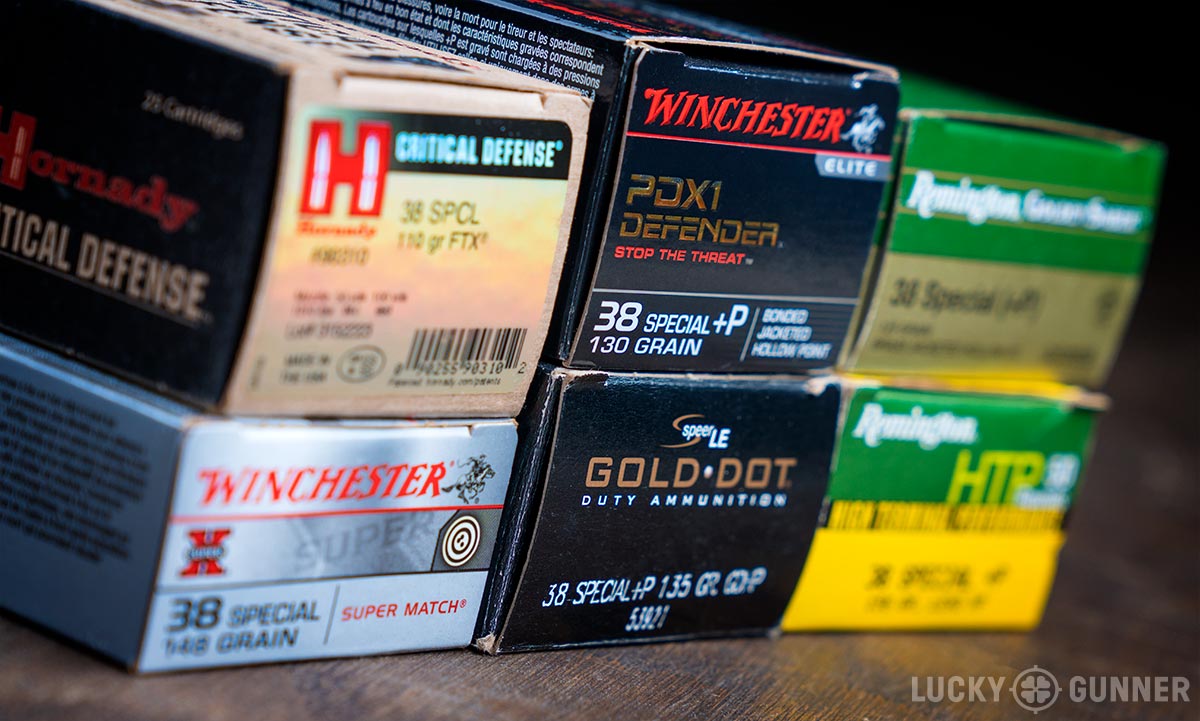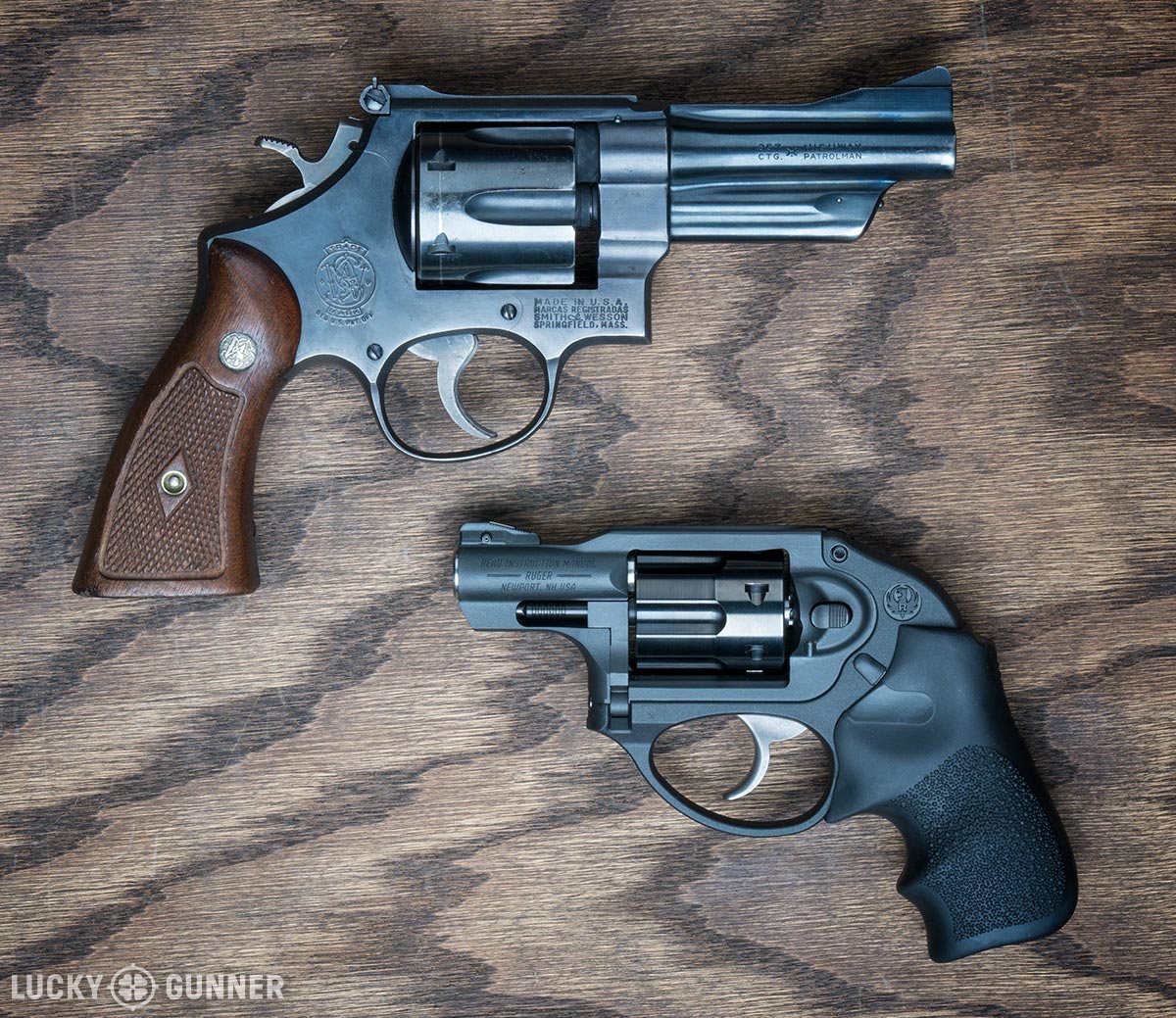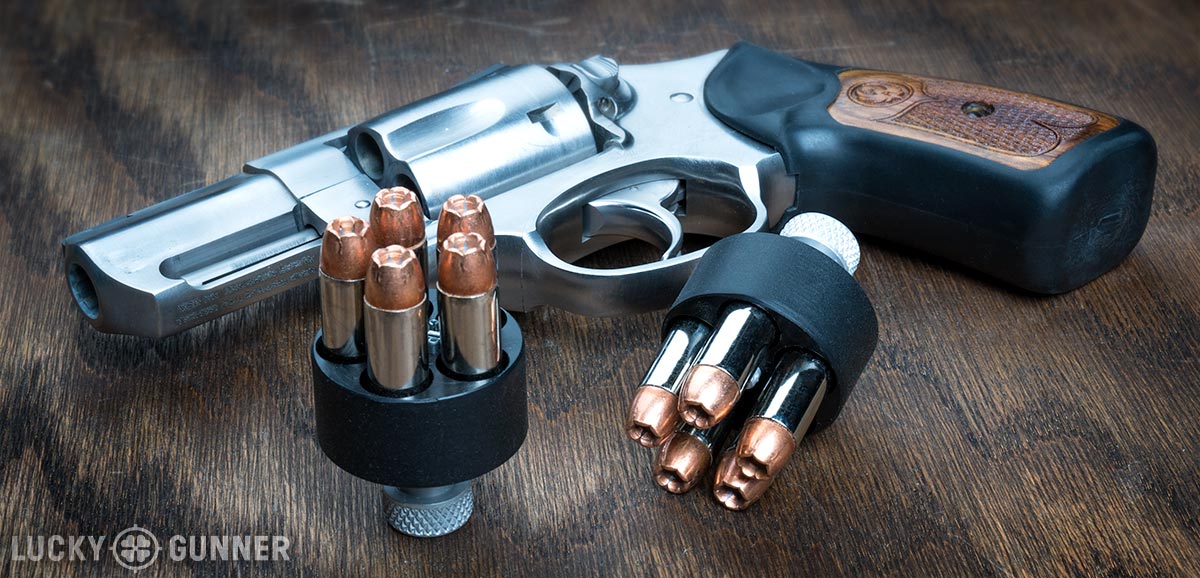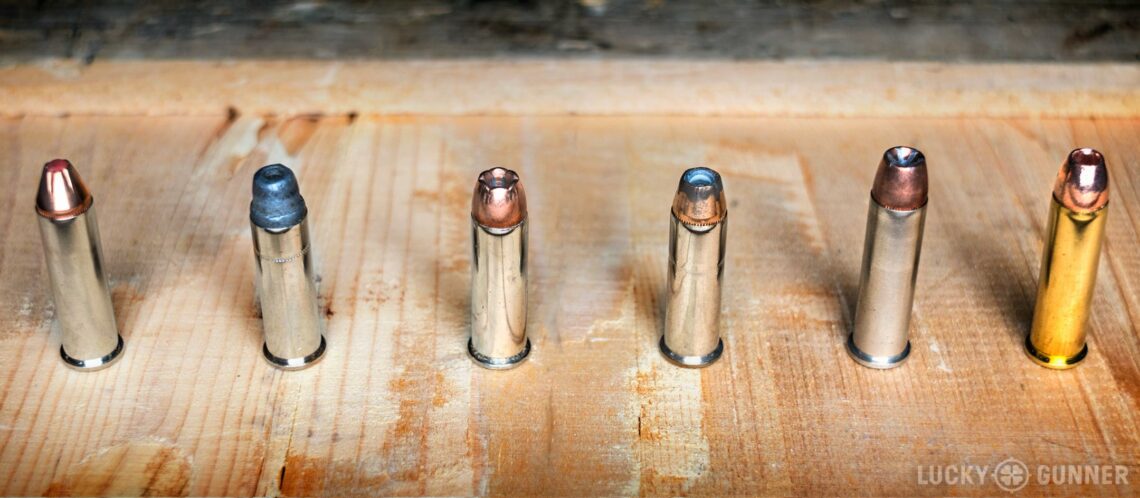In the early 90s, I experienced a malfunction with my revolver that left me dead in the water in the middle of a course of fire. After shooting the first few stages of a law enforcement qualification course with my normal carry load, I ran out of the old favorite and switched to an unproven alternative that I was considering switching to.
I didn’t even get through one cylinder’s worth of the new load before the trigger froze up, like it was welded in place. The time limit came and went, leaving me fussing with the gun to troubleshoot it. The cylinder was stuck in place and wouldn’t open up, so I had to step off the line and take an “incomplete” on the course while I inspected the gun.
Further investigation showed that the primer, under intense +P+ pressure, had flowed back into the firing pin hole in the frame and completely tied up the cylinder. I had to force the cylinder open and shear off the offending bit of metal to make the gun operate again. I learned an invaluable lesson that day about proper gear selection and testing, and I also learned the old saw about “revolvers don’t jam” was a dangerous myth.
We tend to focus on validating reliability in our semi-automatic pistols a lot these days, but as my experience proved, we also need to test our revolvers because sometimes “six for sure” . . . isn’t.

In Search Of A Standard
I’ve written elsewhere about the traditional advice of a 200 round standard for verifying reliability in semi-automatic pistols. Although not universal, this rule of thumb was endorsed by enough of the popular figures and writers in the industry over the years to make it stick. However, there doesn’t seem to be an accepted equivalent for the revolvers. Most of the old sages in the gunwriting business were silent about testing revolver ammunition for reliability probably because they thought it was unnecessary. A great number of them wrote profusely about the revolver’s inherent reliability with any choice of ammunition and proclaimed it superior to the semi-auto pistol as a result. American law enforcement must have agreed because it took a long time for the semi-auto pistol to gain supremacy among police.
However, as with the “200 round rule” for semi-autos, this advice about revolver reliability belongs to a different age. Back in the heyday of the revolver, the guns in popular use were mostly built on medium to large frames and the ammunition was typically kept within standard pressure limits that were relatively sedate. When the more powerful magnum loads were introduced in the various calibers, they were for large frame guns that could properly handle the increased pressures and recoil. When a flirtation with magnum loads in medium sized guns didn’t work out so well for either the shooters or the guns, the industry corrected back towards new Medium-Large frames that fixed the issue on both ends.
In this environment, the revolver established an enviable reputation for reliability and little thought was given to testing ammunition/gun combinations for reliability. It was generally assumed that if the revolver could chamber the cartridge, it would work.
A Different Era
However, the revolver scene has changed dramatically since that time. While a medium to large frame revolver is still an excellent fighting gun, we are now much more likely to see defensive revolvers in the role of a backup, or a compact concealed carry gun. These guns are built on much smaller frames, and many are made of extremely light materials in comparison to the larger, steel frame, duty guns that built the revolver’s reliable reputation.
The ammunition has changed too. Whereas Magnum and +P (or +P+) ammunition was strictly limited to medium to large frame guns in the past, it has become commonplace to carry these powerful loads in small frame guns today. It used to be that the small frames were only rated for standard pressure .38 Special at the most, but the lighter, stronger, modern snubbies are now frequently rated for +P and (shudder!) .357 Magnum.
New Gremlins
All this comes with a price, however. When you move from shooting .357 magnums in a heavy, large frame, steel revolver with a six-inch barrel to shooting them in a lightweight, small frame, alloy revolver with a sub two-inch barrel, something has to give. Most often it’s the shooter, but sometimes it’s the gun.
In my case, the higher pressure ammo blew out the primer and tied up the cylinder, but there are other gremlins out there to watch for. Heat buildup has caused problems in some revolvers in the past as materials expand and required clearances shrink. On some guns, newly added internal locking mechanisms and indicators have malfunctioned under recoil and components have bound up the action. On some of the featherweight guns, heavy-for-caliber bullets have jumped their crimp under recoil and been pulled far enough forward to prevent cylinder rotation. In yet other guns, unburned powder from the more heavily stoked cartridges has accumulated under the ejector star, preventing the cylinder from closing or rotating due to the extremely tight tolerances in these little guns. The same can happen at the cylinder gap, if tolerances are running tight and fouling is excessive.

Clip-fed revolvers are seeing a bit of a resurgence these days, and while an ammunition clip can expedite loading and unloading, they can also cause problems. Most often, they are a result of the clip getting bent while removing spent brass or loading new cartridges which results in a cylinder that binds or can’t be closed. However, “dirty” ammunition that leaves a lot of unburned powder behind can cause the same problems by preventing a clip from being properly seated. Once in a while, a variation in case dimensions (extractor groove shape or rim thickness) can even cause a headspace issue that affects reliability as well. All of these hidden dangers, and others not discussed, can have a disastrous impact if they are not discovered in testing prior to relying on the gun/ammunition combination for defensive purposes. As such, it is as important to test our revolvers for reliability with our duty ammunition as it is to test our semi-autos.
That’s Easy!
Fortunately, the mechanical design of a double action revolver eliminates many of the problem areas of semi-auto pistols. We don’t have to worry about spring power and slide velocity or the delicate balance of timing that they create. Our revolvers are not dependent on firm resistance from our shooting stance to function properly—we merely need to pull the trigger. They are also not subject to the large number of variables introduced by using different magazines as their autoloading brothers are.
Therefore, all that remains is to shoot the gun. But how many times? A full 50 round box seems reasonable and ought to do it, but if financial or logistical hurdles are prohibitive, you might be able to get by with less. It seems prudent to shoot at least twice your basic load out, so if you carry two spare loaders, that’s six cylinders full. Shooting six cylinders full should allow you to detect any lurking difficulties and still have enough remaining to load your gun and speedloaders for carry with a 50 round box (or just slightly over it, if you have a six-shooter).
By the Numbers
Here are some things to keep in mind when it comes time to start your testing:
Break It In
Just like with your semi-autos, you should plan on shooting 150-200 rounds of more affordable training ammunition (FMJ, RNL, SWC) to “break in” both you and the gun before you start testing with the premium stuff. This will smooth out the action and allow you to detect mechanical and material flaws while simultaneously ensuring that your technique is good. You can induce a malfunction in your revolver if your thumb strikes the thumb piece during recoil and unlocks the cylinder, so it’s important to develop proper form. Also, all you “thumbs forward” autopistol shooters out there will need to work out a different solution to avoid flame or gas cutting from the cylinder gap. Get all of this straightened out before you start shooting the higher pressure +P or Magnum loads.
Shoot It Fast
Doing so will help you detect whether or not the cartridge is too powerful for your abilities. Snubbies loaded with powerful loads are a real handful, and you need to know if you’ve crossed a point of diminishing returns by shooting the gun with loads that are just too hot to control. Also, shooting it fast may allow you to discover other problems, like that sharp edge on the bottom of the thumb piece that keeps cutting you. Get the gun hot. This is not the time for slow fire that allows the gun to cool in between shots or cylinders. We want to get it hot to eliminate concerns over thermal expansion issues, so shoot it fast, like your life depends on it . . . because it just might one day.
Test Your Speedloaders
Reload using your spare loading devices. Thumbing individual rounds into the cylinder can mask problems like excessive chamber fouling or fouling under the star that is caused by your ammunition. Your gravity-feed speedloader may not be able to seat cartridges deep enough or smash the star down into place over debris like your big old thumb can. It’s important to figure this out now, not in the middle of your worst day ever.

Write It Down
Document the specifics about any failures during your test including the type of ammunition, number fired, type of malfunction, etc., for further evaluation and (if warranted) retesting.
There’s no doubt that revolvers offer many advantages from a reliability standpoint, but that doesn’t make them worry-free. As with any gear that you will stake your life on, you need to wring them out thoroughly under realistic conditions to make sure they will be there when you need them most.
